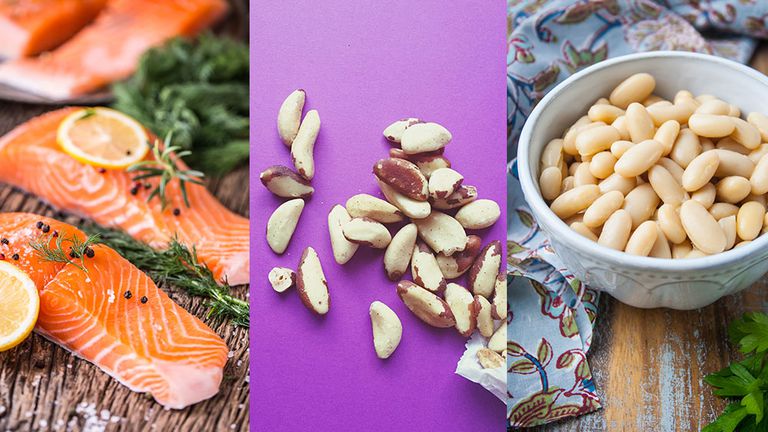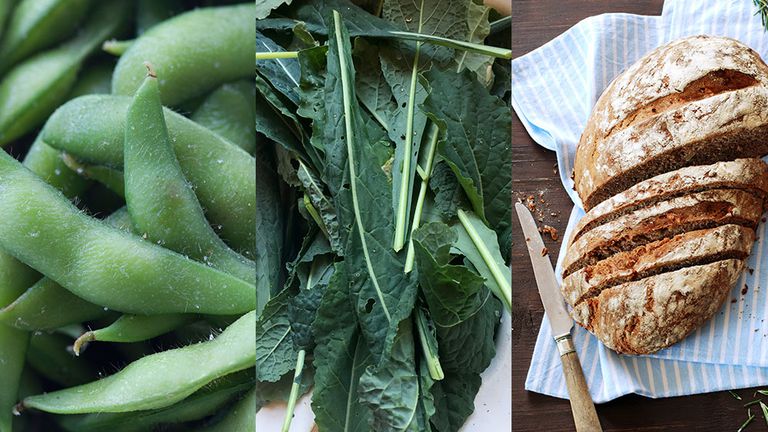Here’s a fact: Hypothyroidism, or underactive thyroid, can’t be cured. But eating a thyroid-friendly diet can help you manage your condition.
Your thyroid is a butterfly-shaped gland in your neck that controls metabolic activities. It does this by producing thyroid hormones that regulate things like heart rate and calorie burning. Underactive thyroids don’t produce enough of these hormones, which can leave you feeling tired, depressed, and like just looking at food is enough to make you gain weight .
Taking synthetic thyroid hormone can make up the difference and make you feel more like yourself. But eating certain foods—and limiting your consumption of others—can also help your thyroid function at its best, explains Hong Lee, MD, a double board-certified internist and endocrinologist with AMITA Health Adventist Medical Center Hinsdale in Illinois. That could allow you to avoid having to take higher and higher doses of synthetic thyroid hormones, and eventually end up relying on them completely in order for your thyroid to function.
So what’s worth loading up on, and where should you consider cutting back? Here’s a look at the best foods to eat for your thyroid, along with a few that aren’t so great.
CONSIDER EATING MORE…

Salmon
Some findings suggest that many people with Hashimoto’s disease (the most common type of hypothyroidism) have lower levels of vitamin D compared to the general population . That’s bad news, since low D is tied to higher levels of thyroid antibodies. “The antibodies activate the immune system to attack the thyroid tissue, which creates inflammation and makes it harder for the thyroid to do its job,” explains Lisa Markley, RDN, co-author of The Essential Thyroid Cookbook.
Getting the recommended 600 IUs of vitamin D per day can keep some of that inflammation at bay so your thyroid can function at its best. And salmon is a top source, with 570 IUs per 3-ounce serving . (Not a fan of fish? You’ll also find vitamin D in fortified orange juice, milk, and eggs.)
Brazil nuts
Aim to have two daily, recommends Dr. Lee. That’s enough to get your recommended daily dose of selenium, a trace mineral that’s highly concentrated in the thyroid gland and plays an essential role in thyroid hormone production .
Another big benefit? Selenium boasts antioxidant powers. “Autoimmune conditions like Hashimoto’s can lead to increased inflammation,” Markley explains. “Selenium can help calm or suppress some of that through its antioxidant capabilities.”
White beans
A cup of cooked white beans serves up 8mg of iron—a mineral that many people, especially premenopausal women, have trouble getting enough of . But getting your fill is important. “If you don’t, it can impair the activity of enzymes that produce thyroid hormones,” Dr. Lee says. (Women aged 19 to 50 need 18mg iron daily, while men and women 51 and older need 8mg .)
Two things to keep in mind: First, iron is tough for the body to absorb, but you can boost your absorption of iron-rich foods by pairing them with a source of vitamin C, Markley says. (Like tossing white beans with lemon vinaigrette, for instance.) And second, iron can make thyroid drugs less efficient. So be sure to take your thyroid meds at least four hours before or after eating an iron-rich meal .
YOU MIGHT WANT TO EAT LESS…

Soy
Eating the wrong soy foods—or having too much soy in general—can spell bad news for your thyroid. Why? The mineral iodine is an essential building block for thyroid hormone, but soy contains isoflavone compounds that block iodine from doing its job, Markley explains.
Most people with hypothyroidism don’t need to steer clear of soy completely. But it’s a good idea to limit your consumption to a few servings a week, and to stick with minimally processed forms of soy like tempeh or miso. Foods containing processed soy protein isolates (like soy protein powder, soy protein bars, or soy-based meat analogs) tend to have a higher concentration of isoflavones, says Markley.
Cruciferous veggies
Yup, we’re talking about almighty kale—along with broccoli, cauliflower, Brussels sprouts, and cabbage. Even though they’re loaded with nutrition, cruciferous vegetables are also high in naturally occurring enzymes called goitrogens, which can interfere with the production of thyroid hormone, Lee says.
The good news is that you don’t need to swear them off completely. “The dose makes the difference,” Markley says. A few servings of cruciferous veggies per week is fine, but juicing five pounds of kale on a daily basis probably isn’t the best idea. Just make sure they’re cooked. Heat neutralizes the harmful enzymes, says Lee.
Gluten
Going gluten-free isn’t right for everyone. But some experts suspect that gluten-containing foods like wheat, barley, and rye (not to mention the more sneaky sources of gluten) can trigger inflammation, Dr. Lee says. “That could stimulate an antibody attack on thyroid tissue,” adds Markley.
Still, neither say that all people with an underactive thyroid automatically need to cut out gluten. But eliminating it for three to four weeks could be worth a try. If you notice that eating gluten-free makes you feel better, you can talk with your doctor about making the change permanent, Markley says.
CHECK WITH YOUR DOCTOR ABOUT…

Salt and seaweed
You can’t talk about foods for underactive thyroid without talking about iodine. Remember, the mineral is a must for the production of thyroid hormone. But getting more than 1,100 mcg daily can actually make your thyroid problem worse .
That’s why it’s important to pay attention to your intake, says Lee. Iodine is found in table salt (but not Kosher or sea salt), dairy products, and seafood. As long as you eat this stuff regularly, you’re almost certainly getting enough—and you should steer clear of foods with very high concentrations of iodine, like seaweed .
On the other hand, if you cook with Kosher or sea salt instead of table salt and don’t often eat iodine-rich foods, you may need to work to get more of the mineral. Your endocrinologist can help you determine whether you’re getting the right amount.












